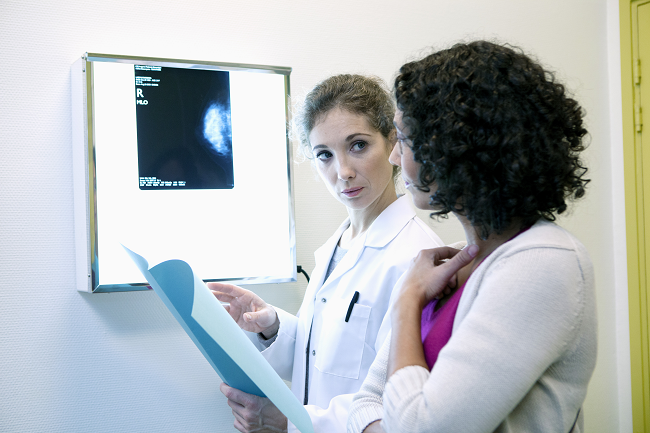The most commonly recognized symptom of breast cancer is a lump in the breast. However, women should also be aware breast cancer does not always present with a palpable lump.
Anytime you notice something different about your breast — like swollen tissue, redness, or a change in appearance — alert your doctor right away. Swollen, red, or “inflamed” skin is the most common symptom of one rare type of cancer known as “inflammatory” breast cancer.
Unlike most types of breast cancer, the inflammatory type usually doesn’t reveal itself with a lump or a mass; it appears as sheets of cancer, often called “cancer nests” by doctors. The cancer clogs breast tissue vessels.
What to look for
With inflammatory breast cancer, a buildup of fluid and swelling may give the breast a thick, pitted appearance that looks similar to an orange peel. The skin of the breast may look red, pink, reddish-purple, or bruised, and it may feel warm — even feverish — to the touch. The affected breast may become larger or firmer, tender, or itchy. The nipple may be inverted (facing inward), and lymph nodes under the arm or above the collarbone may be swollen.
These symptoms usually develop quickly — over a period of weeks or months. Since an infection can cause similar symptoms — and because inflammatory breast cancer is often mistaken for an infection in its earliest stages — it’s important to see your doctor as soon as you notice any changes in your breast.
Risk factors
Although we don’t know what causes inflammatory breast cancer, it accounts for 1 to 5 percent of all breast cancer cases in the United States. We also know it’s diagnosed more frequently in young women, and it occurs more frequently and at a younger age in African-American women.
Diagnosis and treatment options
Most cases of inflammatory breast cancer are diagnosed during a clinical examination. To confirm the diagnosis, your doctor may order a biopsy, mammogram or breast ultrasound.
Treatment options for inflammatory breast cancer consist of chemotherapy, targeted therapy, surgery, radiation therapy, hormonal therapy, or a combination of treatments.
Be sure you’re taking steps to protect your breasts. Talk with your doctor about what types of breast screening are right for you — and at what age. He or she will be able to provide the best advice based on your family and personal history and lifestyle habits. Don’t have a doctor? Find one here.







